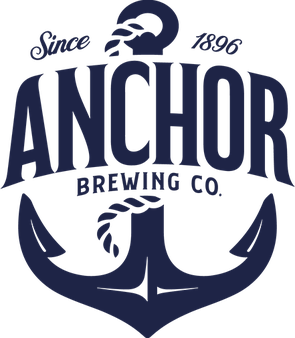
Anchor Brewing Company is an American alcoholic beverage producer, operating a brewery on Potrero Hill in San Francisco, California. The brewery was founded in 1896 and was purchased by Frederick Louis Maytag III in 1965, saving it from closure. It moved to its current location in 1979. It is one of the last remaining breweries to produce California common beer, also known as Steam Beer, a trademark owned by the company.

IBC Root Beer is an American brand of root beer now owned by Keurig Dr Pepper. It was originally owned by IBC until it went out of business.

The Theodore Hamm's Brewing Company was an American brewing company established in 1865 in Saint Paul, Minnesota. Becoming the fifth largest brewery in the United States, Hamm's expanded with additional breweries that were acquired in other cities, including San Francisco, Los Angeles, Houston, and Baltimore.

Cervecería Cuauhtémoc Moctezuma (Cervecería Cuauhtémoc Moctezuma / Heineken México) is a major brewery based in Monterrey, Nuevo León, Mexico, founded in 1890. It is a subsidiary of Heineken International.
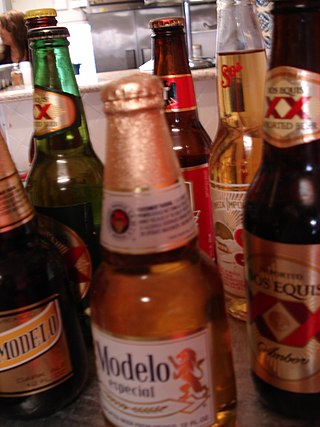
History of beer in Mexico dates from the Spanish conquest of the Aztec Empire. While Mesoamerican cultures knew of fermented alcoholic beverages, including a corn beer, long before the 16th century, European style beer brewed with barley was introduced with the Spanish invasion soon after Hernán Cortés's arrival. Production of this beer here was limited during the colonial period due to the lack of materials and severe restrictions and taxes placed on the product by Spanish authorities. After the Mexican War of Independence, these restrictions disappeared, and the industry was permitted to develop. Furthermore, the arrival of German immigrants and the short-lived empire of Austrian Maximilian I in the 19th century provided the impetus for the opening of many breweries in various parts of the country.

Beer in the United States is manufactured by more than 7,000 breweries, which range in size from industry giants to brew pubs and microbreweries. The United States produced 196 million barrels (23.0 GL) of beer in 2012, and consumes roughly 28 US gallons (110 L) of beer per capita annually. In 2011, the United States was ranked fifteenth in the world in per capita consumption, while total consumption was second only to China.
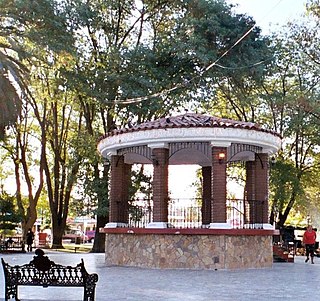
Tecate is a city in Tecate Municipality, Baja California. It is across the Mexico–US border from Tecate, California. As of 2019, the city had a population of 108,860 inhabitants, while the metropolitan area has a population of 132,406 inhabitants. Tecate is part of the San Diego-Tijuana metropolitan area and the largest city between Tijuana and Mexicali. Tecate is a regional economic hub and popular tourist destination, known as home to the Tecate Port of Entry and to Tecate beer.

Stone Brewing is a brewery headquartered in Escondido, California, USA. Founded in 1996 in San Marcos, California, it is the largest brewery in Southern California. Based on 2020 sales volume it is the ninth largest craft brewery in the United States.

The North Coast Brewing Company is a craft brewery located in Fort Bragg, California. As of 2018, it is the 46th-largest craft brewer by annual sales volume in the United States.

The National Brewing Company was an American brewing company that was founded in Baltimore, Maryland, in 1885. Its Baltimore brewery was located in the city's Highlandtown neighborhood. After World War II, it grew to be the largest brewer in Baltimore history and its advertising, including one-eyed mascot "Mr. Boh" and its slogan "From the Land of Pleasant Living", became part of the folk culture of the Baltimore area.
The Manhattan Brewing Company was a brewery founded in Chicago, United States in 1893 which had associations with Al Capone and organized crime during and after prohibition. Manhattan later changed its name to the Canadian Ace Brewing Company and operated as such through the 1950s and 1960s until closing in 1968.

The Falstaff Brewing Corporation was a major American brewery located in St. Louis, Missouri. With roots in the 1838 Lemp Brewery of St. Louis, the company was renamed after the Shakespearean character Sir John Falstaff in 1903. Production peaked in 1965 with 7,010,218 barrels brewed and then dropped 70% in the next 10 years. While its smaller labels linger on today, its main label Falstaff Beer went out of production in 2005. The rights to the brand are currently owned by Pabst Brewing Company.

Ballast Point Brewing Company is an American brewery founded in 1996 by Jack White in San Diego, California. Ballast Point Brewing Co. started in the back of Home Brew Mart, a homebrew supply store White founded in 1992. As of 2015, it was the second largest brewer in San Diego County and the 17th largest brewery in the country based on sales volume. The company's main production facility is in Miramar. It also has brewery locations in San Diego's Little Italy and Scripps Ranch neighborhoods, as well as its original Home Brew Mart location in San Diego's Linda Vista neighborhood. In 2017, Ballast Point opened its first East Coast brewing facility in Daleville, Virginia, near Roanoke.

21st Amendment Brewery is a brewery located in San Leandro, California. Their original location is a brewpub and restaurant in the South Park neighborhood of San Francisco, California, two blocks from Oracle Park. The brewery's name refers to the 21st Amendment to the U.S. Constitution, which repealed Prohibition.

San Diego County, California, has been called "the Craft Beer Capital of America". As of 2018, the county was home to 155 licensed craft breweries – the most of any county in the United States. Based on 2016 sales volume, three San Diego County breweries – Stone, Green Flash, and Karl Strauss – rank among the 50 largest craft brewers in the United States. San Diego County brewers pioneered the specialty beer style known as Double India Pale Ale, sometimes called San Diego Pale Ale. Its beer culture is a draw for tourism, particularly during major festivals such as San Diego Beer Week and the San Diego International Beer Competition. San Diego County breweries including Stone Brewing Co., AleSmith Brewing Company and Ballast Point Brewing Company are consistently rated among the top breweries in the world.

Mission Brewery Plaza is a historic brewery building in the Middletown neighborhood of San Diego, California. The building was added to the National Register of Historic Places on July 6, 1989. It is also the name of a San Diego microbrewery which opened in 2007.
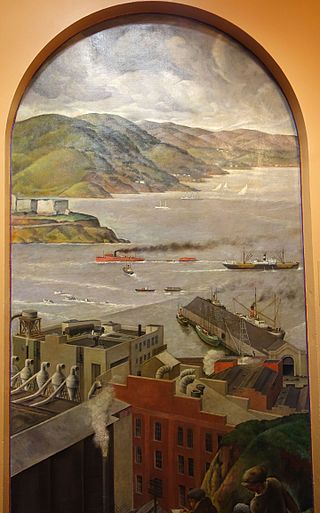
José Moya del Piño (1891–1969) was a Spanish-born American painter, muralist and educator. He associated with the Post-impressionists of Spain and the Depression-era muralists in the San Francisco Bay Area. He taught classes at the San Francisco Art Students League, San Francisco Art Institute and the College of Marin.
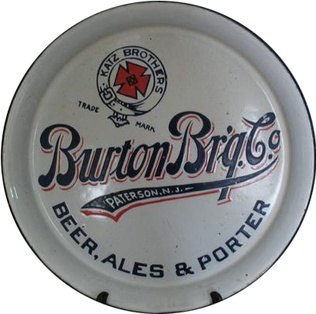
Paterson Consolidated Brewing Company is a conglomerate brewery that came about in 1890 with the union of four breweries Braun Brewery, Sprattler & Mennell, Graham Brewery, The Katz Brothers, and Burton Brewery after an English syndicate offered to buy them out.

















